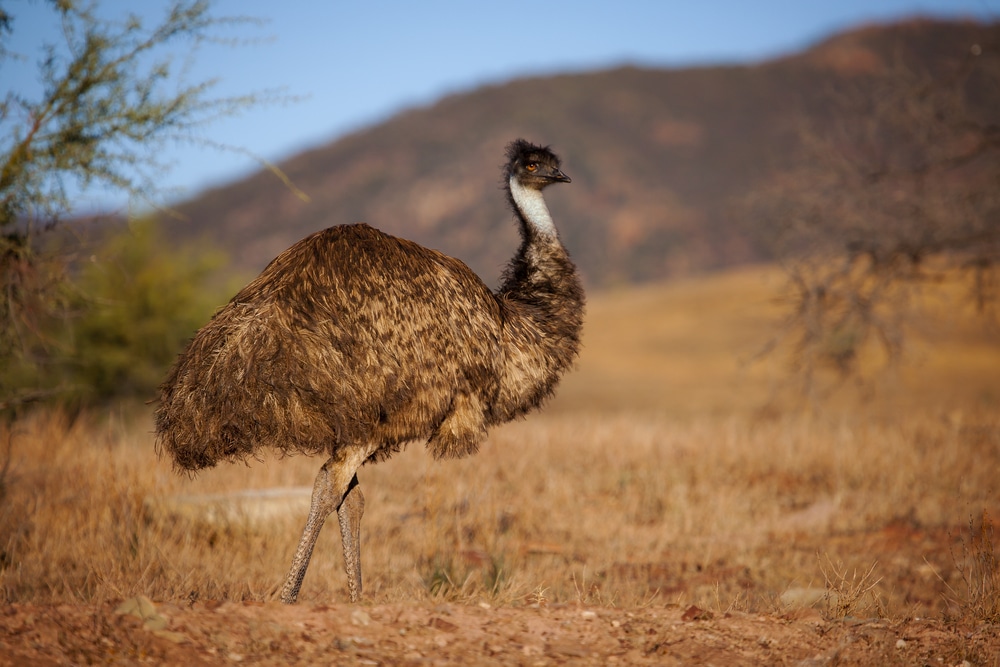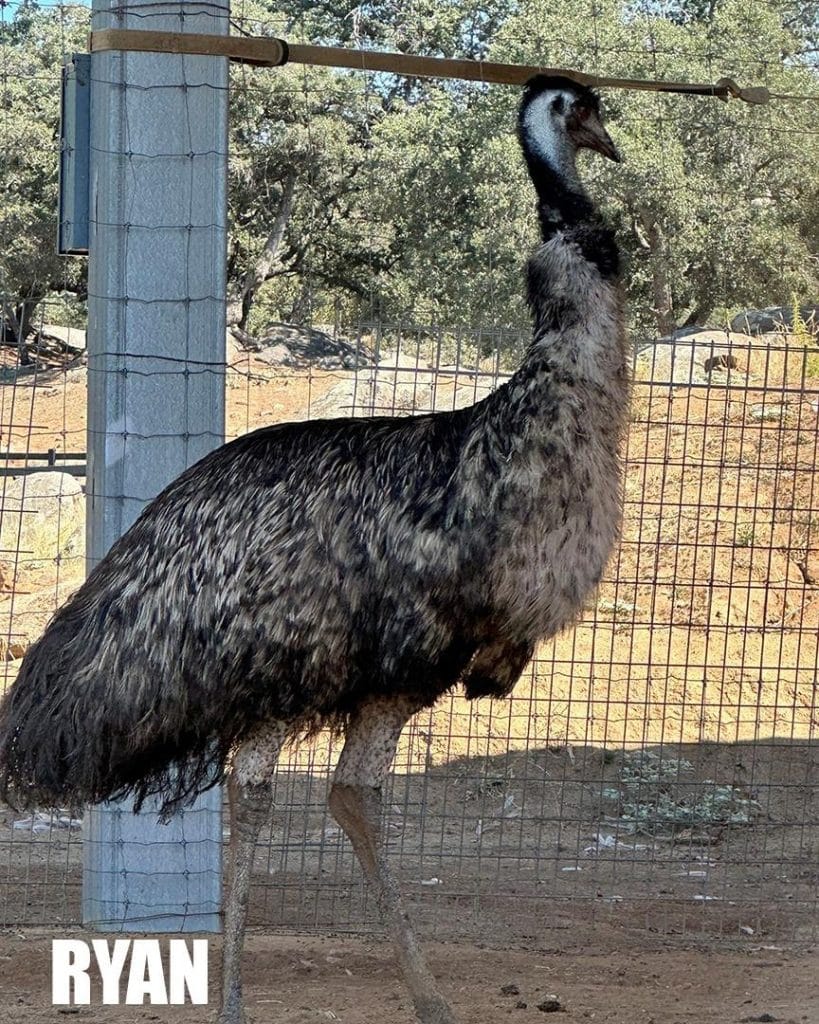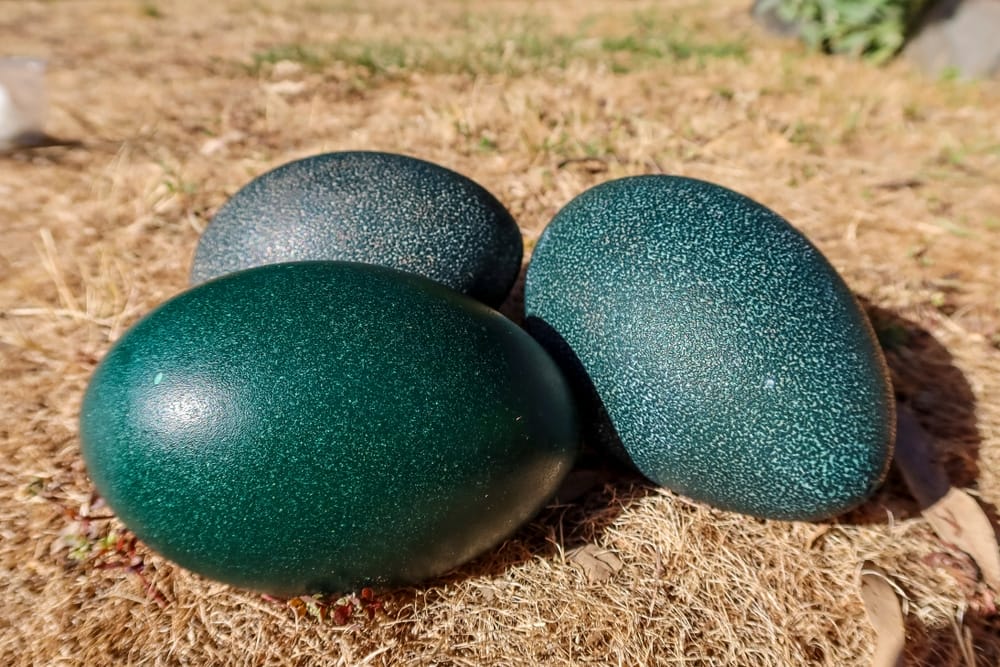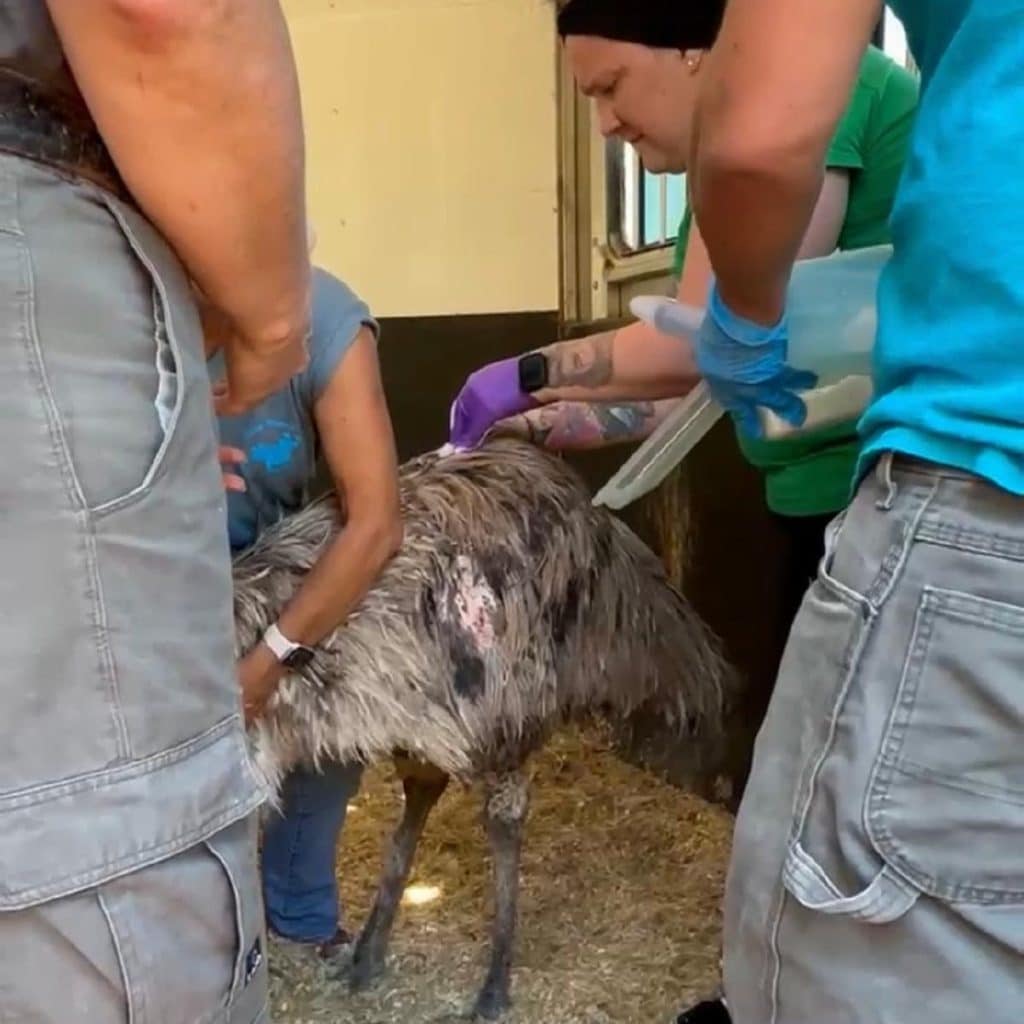
Emus are the second-largest living bird by height, behind the ostrich. They stand up to 6.2 feet (1.9 meters) tall, with distinctive long necks and legs. They are native to Australia and inhabit various habitats across the country, including savannahs, forests, and grasslands. Emus are flightless, but they run fast and can reach up to 31 miles per hour (50 kilometers per hour) over short distances, thanks to their powerful legs.

Emus and ostriches are large flightless birds known for their impressive size and speed, but they have some key differences.
Emus are the world's second tallest bird, surpassed only by the ostrich. They are so tall that they have a running stride of about 9 feet (2.7 meters) in length. This remarkable stride allows emus to cover ground quickly while running, making them one of the fastest land animals in their habitat. Despite their large size and heavy weights, emus are surprisingly agile and can easily maneuver through various types of terrain.

Emus are found in Australia. They once lived in Tasmania but were exterminated after the arrival of Europeans. Two dwarf species of emus that lived on King Island and Kangaroo Island also became extinct. Both species were hunted to extinction by European settlers.
Today, the mainland emu population remains Australia's only surviving species. But they are mostly absent in heavily populated areas, especially along the east coast.
Emus are known for their speed and agility on land, thanks to their long legs and powerful calf muscles. In fact, emus are the only birds with calf muscle. Their speed is crucial for evading predators, chasing prey, and traversing their vast native habitats.
Additionally, emus can cross rivers and swim across bodies of water when necessary. They also have impressive vertical leaps, which can help them navigate obstacles or escape from predators.
Emus have relatively small and stubby wings compared to their body proportions, rendering them flightless. However, these wings serve other functions, such as balance and communication. Emus also have tiny claws on their feet, which they use for various purposes, including foraging for food and defending themselves against predators.

One of the most fascinating aspects of emu behavior is their unique breeding and parental care strategy. In emu mating dynamics, the males are responsible for incubating the eggs and raising the chicks. After the breeding season, female emu typically moves on, leaving the eggs in the care of the male who fertilized them.
The male emu tends to the nest and protects the eggs until they hatch. He then continues caring for the chicks, teaching them how to forage for food and protecting them from threats. It's also worth noting that the female emu is larger than the male.
The Great Emu War of 1932 was a unique and humorous event in Australian history. The conflict arose when large numbers of emus migrated into agricultural areas in Western Australia in search of food. The emus quickly became a nuisance to farmers because they were damaging crops. In response, the Australian government dispatched a small military force armed with machine guns to cull the emu population.
However, the operation proved largely unsuccessful, as the agile and elusive emus outmaneuvered the soldiers and avoided significant casualties. The so-called "war" ended inconclusively, with the emus ultimately prevailing and highlighting the challenges of human-wildlife conflict in agricultural landscapes.
Emu is one of the two iconic animals featured on Australia's Coat of Arms. The other animal is the kangaroo. Both animals cannot move backward easily, which has been interpreted as a representation of Australia's progress and forward-looking nature as a nation. This symbolism is reflected in the Australian national motto, "Advance Australia."
People farm emus for the same reasons they are killed for in the wild – their valuable resources. The high demand for emu products, including eggs, meat, and feathers, has led to the rapid growth of emu farming in recent years.
Emu's dark green eggs are prized for their large size and nutritional value, while emu meat is sought after for its lean quality and health benefits. Their feathers are highly sought after, too, for their ability to attract and capture dust particles without scratching or damaging surfaces. Even automobile manufacturers like Audi and BMW have reportedly used emu feathers in their car manufacturing processes to ensure a pristine finish.
While emu farming is growing fast due to demand, it's important to remember that emus are wild animals and deserve to live in their natural habitats. Keeping emus in captivity for farming can have negative consequences, including encouraging illegal poaching and contributing to biodiversity loss in the wild. Additionally, farming practices may not always prioritize the welfare of the animals, potentially leading to poor living conditions and mistreatment.

Organizations like Lions Tigers & Bears (LTB) help provide a safe and nurturing home for emus and other rescued animals. As a true accredited sanctuary dedicated to rescuing and caring for exotic and wild animals, LTB ensures that emus can live in a naturalistic environment where they can express their natural behaviors and receive the proper care and attention they deserve.
Back in October of 2023 we added three new emu family members: Carla (Aka Dr. Emu), Sarah, and Ryan! Their journey to us began with a heartwarming rescue mission after the unfortunate passing of their previous owner. When the call for help reached us through the San Diego Humane Society, we couldn't say no to these precious birds.
Upon their arrival, we discovered many health challenges, but our dedicated team of caregivers are here to ensure their well-being. We're committed to helping Carla, Sarah, and Ryan thrive in their new home and have plans for a cozy habitat tailored to their needs. They would love for you to come visit us!
It's crucial to choose accredited organizations that adhere to the highest standards of animal care, ethical practices, and transparency. Accredited sanctuaries and animal shelters prioritize the well-being of their residents and provide a safe and enriching environment for animals in need. By supporting accredited sanctuaries like Lions Tigers & Bears, you can ensure your contributions make a positive impact on animal welfare, education, and conservation efforts.

Ph: 619.659.8078
Fx: 619.659.8841
[email protected]
24402 Martin Way, Alpine, CA 91901